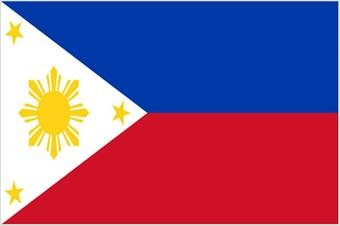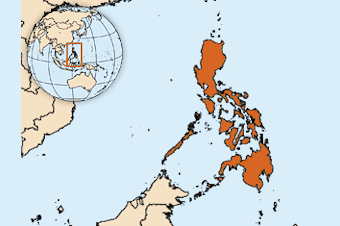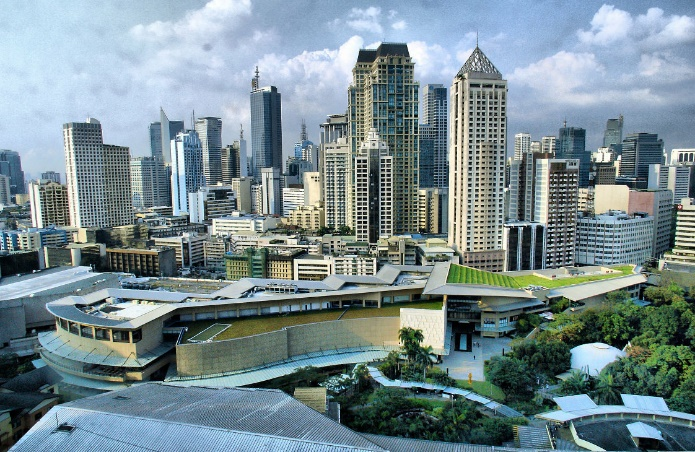

The Philippines
1. Statistics
Total population (2016) 103,320,000
Gross national product per capita (international PPP dollars, 2013) 7,820
Estimated life expectancy at birth m/w (years, 2016) 66/73
Probability of dying (per 1,000 live births, 2018) under age five 28
Probability of death aged 15-60 years m/w (per 1,000 live births, 2016) 244/141
Total health care expenditures per capita (in international dollars, 2014) 329
Total health expenditures as a % of GNP (2014) 4.7
Recent data from the Global Health Observatory
2. General information about the country

The Philippines is a Southeast Asian nation of more than 7,000 islands in the Pacific Malay Archipelago. The largest of them - Luzon, Mindanao, Samar, Panay, Palawan, Negros, Mindoro, Leyte, Bohol, Cebu.
The Philippines is a presidential republic with a bicameral congress and an independent judiciary.
The Philippines is divided into 80 provinces, grouped into 17 regions. In 1898, after the Spanish-American War, Spain ceded the Philippines, Cuba, Guam, and Puerto Rico to the United States for $20 million under the 1898 Treaty of Paris. With their own small government, the Philippine Islands became a U.S. dependency, and only in 1935 were they granted autonomous status within the United States. In fact, the Philippines was finally granted independence in 1946.
The Philippines is open to foreign investors. The country's energy problems limit development opportunities. Infrastructure remains underdeveloped, and there is dependence on foreign funds because of the small amount of cash savings of citizens.
The Philippines is an agrarian-industrial country. The most developed industries are electronic, textile, chemical, woodworking, food, and pharmaceutical. The agriculture includes fishery and forestry. The Philippines is the largest exporter of coconuts, bananas, rice, and pineapples. Its main trading partners are the United States, Taiwan, Germany, Japan and Hong Kong. Transport infrastructure in the country is rather well developed, consisting of railroads, highways, river and sea transport. The country's largest ports are Davao, Manila and Cebu.
3. Health care system (prevention system)

In the country there is a social health insurance, which applies to the working category of citizens and their family members. It entails benefits for certain medical services and allows the use of medical care in public institutions free of charge in case of first aid and emergency.
Approximately three-quarters of hospitals in the Philippines are private, and they are not cheap, especially in relation to the local standard of living. As a result, most Filipinos do not have access to necessary medical care and prefer to turn to folk medicine.
Poor communities suffer a higher burden of disease because of inequalities in access to services and health status. Local government funding often varies, the benefit package of insurance plans can be unfavorable, and some communities have difficulty accessing public health services. The transfer of responsibility for health care from the federal government to local governments has increased local government responsibility. But until now, most medical payments are made by people out of their own pockets, especially when receiving care in private facilities.
Barangay health clinics serve as primary public health facilities and are staffed by doctors, nurses, midwives, and volunteer barangays.
In the Philippines, especially in rural areas, folk healers, healers, and medicine sellers are particularly popular because of the inaccessibility of sufficient medical care to the rural population and the high prices of pharmaceuticals.
A peculiarity of the Philippines is that it is not obligatory to determine the cause of death at the time of registration, so the national statistics of causes cannot be accurate. In the provinces, especially in the most remote places from registries, births and deaths are often not registered, except when there is a family need, such as going to college.
The major non-communicable diseases in the country are diabetes, heart disease, stroke, cancer, and chronic respiratory disease.
Infectious diseases: Acute respiratory infection, influenza A (H1N1), avian influenza (bird flu), chickenpox, cholera, dengue fever, diarrhea, hand, foot and mouth disease, hepatitis A, hepatitis B, hepatitis C, HIV/AIDS, influenza, leprosy, malaria, measles, meningococcemia, whooping cough, polio, rabies, severe acute respiratory syndrome (SARS), eye pain, tuberculosis, typhoid fever.
4. Well-known public and private clinics
The high level of medical services is evidenced by such medical facilities as St. Luke's Hospital located in Manila and Makati Medical Center. They are furnished with the best European equipment for performing operations of any complexity and other medical services, and are facilitated by highly skilled professionals capable of rendering such services. In small communities medical care is represented by small clinics, able to provide only the most basic medical services - for more serious care must go to the nearest large cities.
There are no reciprocal health care agreements between the Philippines and a number of countries, and insurance policies for foreign citizens are often void, their use is possible only in some resort areas and by no means in full volume.
The best clinics are located in Davao, Ceba, Manila, where the service is comparable with the best medical facilities in other countries, but all of them are private, while in public hospitals the quality of medical services not only does not meet the world standards, but also is at the level of first aid.
Text translated by a representative of «Russian Medical Women’s Association» Bondarenko Anastasia.




